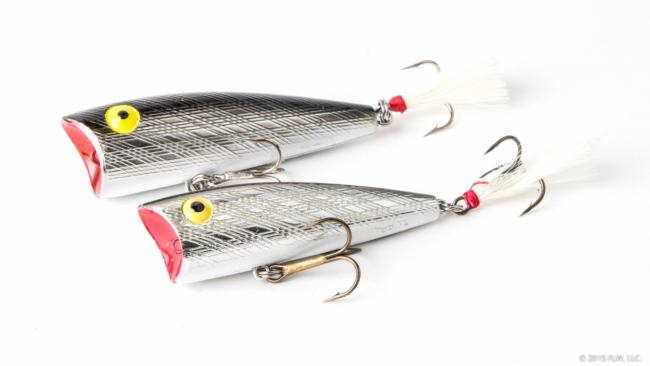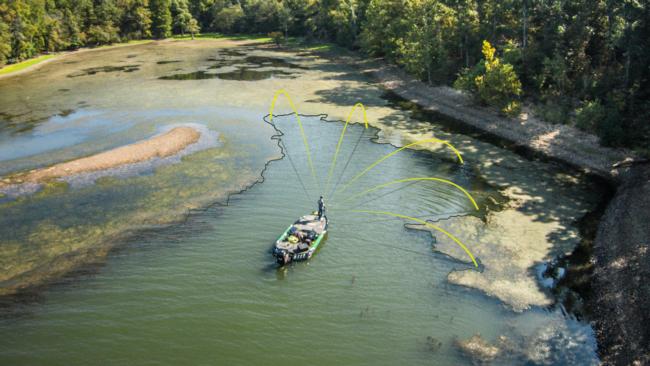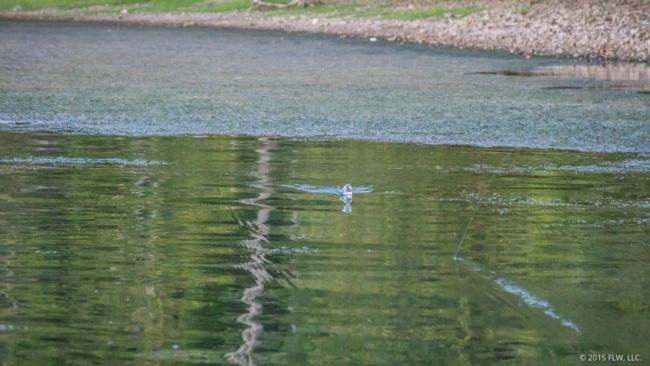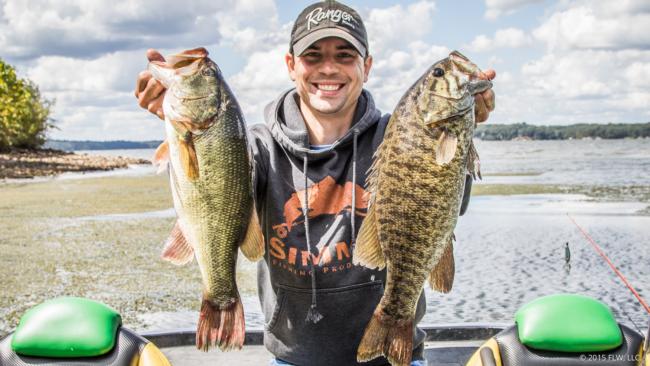Poppers for Matted Grass
Put down the big sticks and pick up a classic topwater for grass bass
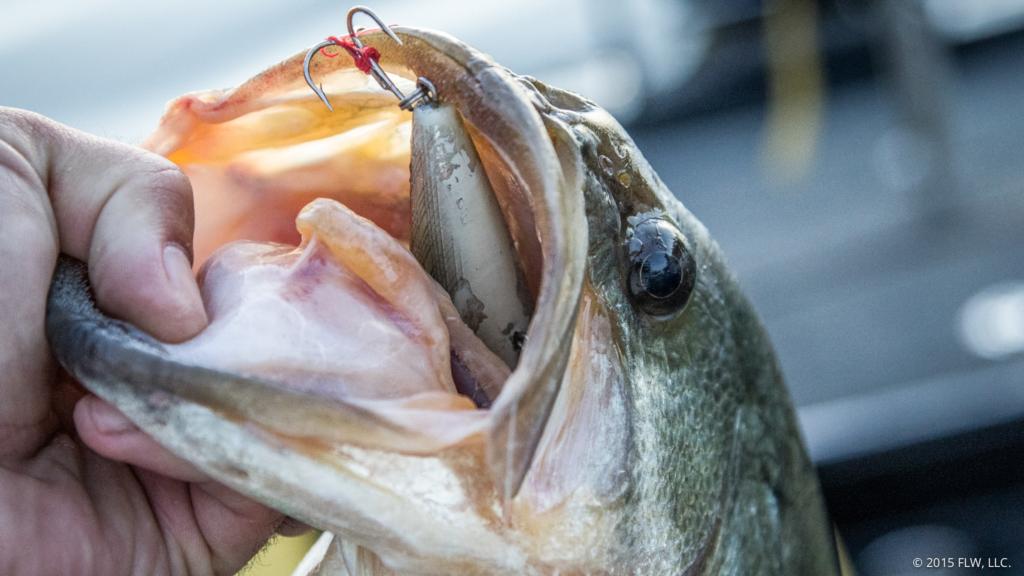
Poppers might be a bit old school, but they’re still great tools for calling up bass from around matted grass when the fish aren’t buried so deep in the green that you need to flip or frog to get them out. They are especially good this time of year when bass are roaming the edges of grass and hunting for schools of bait that are pushing shallow.
The four keys to unlocking a good popper bite are the bait, location, sharp casts and the right retrieve.
Choose the Right Bait
Finding the right bait is important. Some poppers are built to chug slowly, and others have a more subtle spitting action. The Rebel Magnum Pop-R and original Pop-R P70 (if you can find one) both have a chugging action that works well in this situation. The cupped mouth and internal weight in the Pop-R let you get a lot of sound and action in a chug without actually moving the bait very much. A slow-moving bait is key to drawing and tempting the bass.
Dial in the Location
This is the most important piece of the puzzle because knowing where the fish are feeding will obviously make catching them easier. Start by breaking the mat down into pieces and then further dialing in on key spots.
Large grass mats typically have some type of break or opening in them that is a key ambush area for bass. Pick one of these smaller areas – say, a pocket – rather than trying to cover a large, seemingly endless stretch. Within each small zone there will then be even higher-percentage areas – pockets or points within a pocket – that help narrow down even more.
If you’ve got a spot that looks perfect, make multiple casts to it. Remember, a slow-moving presentation is needed to draw a bass out from underneath the matted grass, and being methodical and working the target areas thoroughly will get you more strikes. Don’t be afraid to fish back through a productive area a second time.
Make Accurate Casts
Fishing a popper with treble hooks around grass can be challenging. If one strand of grass attaches to the hooks you might as well forget about catching a bass on that cast. Thus, casting accuracy is top priority. Try to land the bait right on the edge of the grass. If possible, cast parallel to the grass so that the bait stays in the strike zone for most of the retrieve.
The Retrieve
Once you’ve made a perfect cast on the edge of the grass, pause for two to three seconds before beginning the retrieve. Let the ripples on the water fade away. Sometimes bass will come back to eat whatever just landed in their neighborhood.
I often start out with a few short chugs, one long pause and then a steady retrieve all the way back to the boat, but it’s important to vary the retrieve because experimentation might reveal a key cadence or speed. Sometimes mixing in a long pause will trigger a bass. Just make sure to work the bait all the way back to the boat since fish will sometimes follow the bait out of the grass and not strike right away.
Walking the popper is another good technique. To do it, leave a little slack in the line while making short twitches with the rod tip. Gradually take up line as you go. I like to start a walking cadence once I’ve chugged the bait to 3 or 4 feet off the grass edge, then finish with the walking retrieve all the way back.
The Tackle
Rod – Accuracy is vital. A rod between 6 feet, 6 inches and 7 feet long is ideal for making short, precise casts to small target areas around the edges of the grass. A medium- to medium-heavy-action rod is perfect.
Reel – Making lots of casts to small targets can be tiring, so use a light baitcasting reel. Gear ratio isn’t very important, but avoid slow cranking reels. A gear ratio between 6:1 and 7:1 is fast enough to manage a hooked fish.
Line – Line choice is a highly personal thing and depends on rod preference. I prefer using 14- to 20-pound-test monofilament. Other anglers like straight braid or braid with a mono leader. Sinking fluorocarbon is no good.
